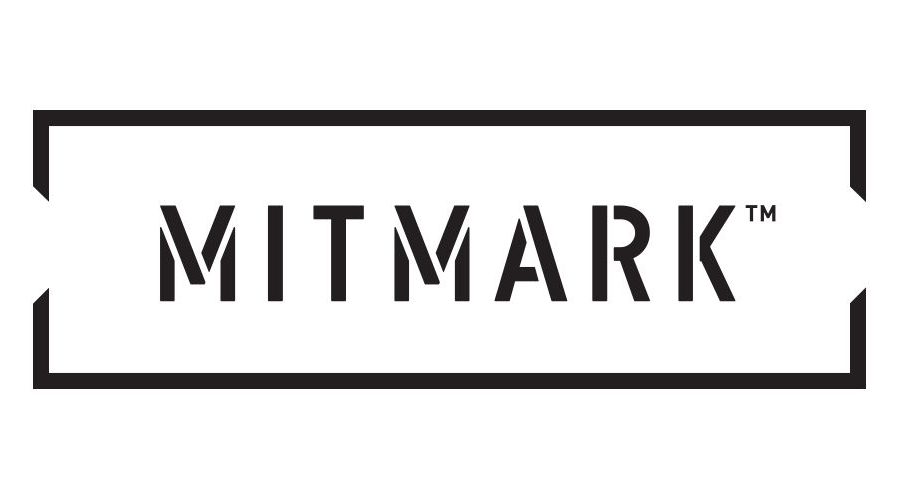Mitmark – How to handle a terrorist attack!
MITMARK is a risk mitigation and smart logistics provider to private and sovereign clients, public entities and private companies.
We are a corporate security and intelligence firm specializing in security advisory services, intelligence-led projects and logistics management services.
MITMARK has two key lines of business:
- Assisting former military personnel in the transition to working in the private sector. Mitmark can either directly employ such veterans, place them within client companies or even help them create their own company.
- Consultants to business and government in operational auditing and risk mitigation in complex operating environments.
MITMARK works across all industry sectors, with particular emphasis on the mining, natural resources and energy sectors, real estate and construction, financial services, law firms, private equity and hedge funds.
Key areas of expertise include:
- Cyber security
- Penetration testing and social engineering
- HUMINT marketing (positive marketing)
- Modifying public perception (negative marketing)
- Digital shadow, i.e. thorough social media investigation
- Online reputation risk management
- Search engine optimization (SEO)
- Anti-search engine optimization (anti-SEO)
- Data analytics and visualization
- Board advisory
- Route management/logistics
- On the ground physical due diligence
- Business intelligence and analysis
- Human terrain mapping
- Corporate investigative services
- Anti-corruption investigations
- Vetting of key corporate officers, staff and sub-contractors
- Operational auditing of projects and key elements of the value chain
- CCTV and alarm advice and installation
- Security vulnerability assessment (SVA)
- Technical counter surveillance measures (TCSM)
- Security and safety training
Mitmark assess, create and implement project, security and risk management strategies that are individually-tailored to the client’s specific needs and based on the local dynamics of the region they operate in.
Website: http://www.mitmark.com/
CASE STUDY
SECURITY DRILLS: TERROR ATTACK
- National Counter Terrorism Security Office
- Developing Dynamic Lockdown Procedures
WHAT IS DYNAMIC LOCKDOWN?
Dynamic lockdown is the ability to quickly restrict access and egress to a site or building (or part of) through physical measures in response to a threat, either external or internal. The aim of lockdown is to prevent people moving into danger areas and preventing or frustrating the attackers accessing a site (or part of). It is recognised that due to their nature some sites may not be able to physically achieve lockdown.
WHY DEVELOP DYNAMIC LOCKDOWN?
Those seeking to conduct attacks often undertake a level of planning including hostile reconnaissance. All opportunities to detect and deter threats at the attack planning phase should be taken. Presenting a strong security posture through visible and effective activity, for example by staff awareness and reporting processes, efficient use of CCTV, deterrent communications and active security zones.
If preventing an attack has not been possible, the ability to frustrate and delay the attacker(s) during the course of the attack and reduce the number of potential casualties can be greatly increased through dynamic lockdown.
Advance planning of what needs to be done to lockdown a site and recognising the need for flexibility in those plans will save lives.
Planning should consider:
- How to achieve effective full or partial lockdown
- How to let people know what’s happening
- Training your staff
- STAY SAFE principles
HOW TO ACHIEVE DYNAMIC LOCKDOWN
- In your planning you should identify all access and egress points in both public and private areas of the site. Remember, access points may be more than just doors and gates.
- Identify how to quickly and physically secure access/egress points.
- Identify how your site can be sectored to allow specific areas to be locked down.
- Staff roles and responsibilities should be included in the plans.
- Staff must be trained to act effectively and made aware of their responsibilities.
- Stopping people leaving or entering the site – direct people away from danger.
- Ability to disable lifts without returning them to the ground floor should be considered.
- Processes need to be flexible enough to cope with and compliment invacuation and evacuation.
HOW TO LET PEOPLE KNOW WHAT’S HAPPENING
Various options exist depending on the nature and occupancy of the site, these include:
- A Public Address (PA) system.
- Existing internal messaging systems; text, email, staff phones, etc.
- ‘Pop up’ on employee computers / internal messaging systems.
- A dedicated ‘lockdown’ alarm tone.
- Word of mouth.
‘CONTEST’
CONTEST is the UK government’s national strategy to reduce the risk to the UK and its interests overseas from terrorism.
CONTEST is based around four streams of work, each comprising a number of key objectives:
1.PREVENT: To safeguard people from becoming terrorists or supporting terrorism.
2.PURSUE: To stop terrorist attacks happening in the UK and UK interests overseas.
3.PROTECT: To strengthen our protection against a terror attack in the UK or against our overseas interests.
4.PREPARE: To mitigate the impact of a terrorist incident if it occurs.
TRAINING YOUR STAFF
Due to the fast moving nature of incidents requiring lockdown, it is important that all staff are able to act quickly and effectively.
- Train all staff using principles of ‘Stay Safe’ (see below).
- Ensure people know what is expected of them, their roles and responsibilities.
- Check staff understanding.
- Regularly test and exercise plans with staff.
- Regularly refresh training.
ANNEX A: STAY SAFE – FIREARMS AND WEAPONS ATTACK
‘Stay Safe’ principles (‘Run Hide Tell’) give some simple actions to consider at an incident and the information that armed officers may need in the event of a firearms and weapons attack.
Full guidance is contained on the NaCTSO website at the following link:
https://www.gov.uk/government/publications/recognising-the-terrorist-threat
NATIONAL COUNTER TERRORISM SECURITY OFFICE:
STAY SAFE – ‘RUN, HIDE, TELL’
- RUN
- Escape if you can.
- Consider the safest options.
- Is there a safe route? RUN if not HIDE.
- Can you get there without exposing yourself to greater danger?
- Insist others leave with you.
- Leave belongings behind.
- HIDE
- If you can’t RUN, HIDE.
- Find cover from gunfire.
- If you can see the attacker, they may be able to see you.
- Cover from view does not mean you are safe, bullets go through glass, brick, wood and metal.
- Find cover from gunfire, e.g. substantial brickwork / heavy reinforced walls.
- Be aware of your exits.
- Try not to get trapped.
- Be quiet, silence your phone.
- Lock and/or barricade yourself in.
- Move away from the door.
- TELL
Call 999 – What do the police need to know?
- Location – Where are the suspects?
- Direction – Where did you last see the suspects?
- Descriptions – Describe the attacker, numbers, features, clothing, weapons etc.
- Further information – Casualties, type of injury, building information, entrances, exits, hostages etc.
- Stop other people entering the building if it is safe to do so.
ARMED POLICE RESPONSE
- Follow officers’ instructions.
- Remain calm.
- Can you move to a safer area?
- Avoid sudden movements that may be considered a threat.
- Keep your hands in view.
OFFICERS MAY…
- Point guns at you.
- Treat you firmly.
- Question you.
- Be unable to distinguish you from the attacker.
- Officers will evacuate you when it is safe to do so.
YOU MUST STAY SAFE
- What are your plans if there were an incident?
- What are the local plans? e.g. personal emergency evacuation plan.
TELEPHONE BOMB THREAT CHECKLIST
RECORD THE EXACT WORDING OF THE THREAT
This checklist is designed to help your staff deal with a telephoned bomb threat effectively and to record the necessary information.
Once the information has been received it should be forwarded immediately to the police on 999.
ASK THE FOLLOWING QUESTIONS
- Where is the bomb right now?
- When is it going to explode?
- What kind of bomb is it?
- What will cause it to explode?
- Did you place the bomb?
- Why?
- What is your name, address, telephone number?
ABOUT THE CALLER
- Age? Sex? Nationality?
THINK ABOUT
- Language:
Well spoken? Irrational? Offensive? Taped or read?
- Caller’s voice:
Calm? Angry? Disguised? Accent?
- Background sounds:
Street noise? PA systems? Office noise? Laughter?
- Time of call:
Number call received on
DIAL 999 WITHOUT FURTHER DELAY
SUSPICIOUS ITEM CHECKLIST
IF YOU DISCOVER A SUSPICIOUS ITEM ANYWHERE IN YOUR BUILDING
- Do not use your mobile phone or radio within 15 metres of the item.
- Dial 999 and ask for police. Do not delay or wait for permission.
- If you’re holding the item, put it down on a cleared, flat surface, separate from other items.
…OTHERWISE, DO NOT TOUCH IT
- Move away.
- Clear people from adjacent rooms, including above and below.
- Prevent others entering the cleared area.
- Tell others what is happening
- Ask witnesses to wait for police.
- Encourage them to write down what they have seen, but discourage them from discussing it with each other before police arrive.
- Tell police if the item has been opened, or partially opened.
IF YOU THINK THERE’S A CHEMICAL OR BIOLOGICAL INCIDENT
- Tell anyone who has been near the item not to touch their eyes, nose or anywhere else on their body, or brush their clothing.
- Reassure them that they are unlikely to feel any ill effects, and that medical aid is on its way.
- They can wash their hands in a solution of one teaspoon of domestic bleach to one litre of water, and then rinse with ordinary soap and water.
- Take them to a comfortable room as close to the isolated room as possible, and have them stay there until emergency services arrive.
- Make a list of who might have been exposed to the material.
- Shut down the air conditioning or ventilation into or out of the affected rooms. If you can isolate these rooms, it may not be necessary to evacuate the rest of the building.


